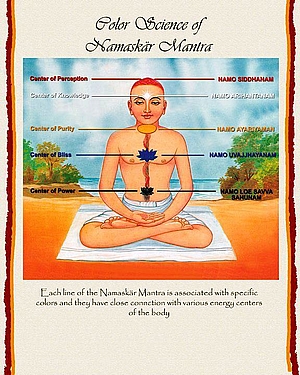
Federation Of Jain Associations in North America
| |||
| GATHA FROM JIV VICHAR | |||
 | |||
| In this stanza, the fifth and final type of sthavara jiva i.e. vanaspatikaya jiva are defined and explained. VANASPATIKAYA: Vanaspatikaya jiva are living beings that have vegetable or flora as their own bodies, also known as vegetal bodies. Now vanaspatikaya are classified into two groups as stated in the Jain scriptures: i. Sadharana vanaspatikaya ii. Pratyeka vanaspatikaya Sadharana vanaspatikaya means infinite souls sharing a common single body, wherein infinite living beings are integrated in one single body, also known as anantakaya. | |||
| Quote - Paryushan Day 7 | |||
| There is no separate existence of God. Everybody can attain God-hood by making supreme efforts in the right direction. - Bhagwan Mahavir | |||
| PARYUSHAN Day - 7 | |||
|
| |||
Useful Links:
Pratikraman Introduction in English: Pratikraman Explanation of Ritual in English:

